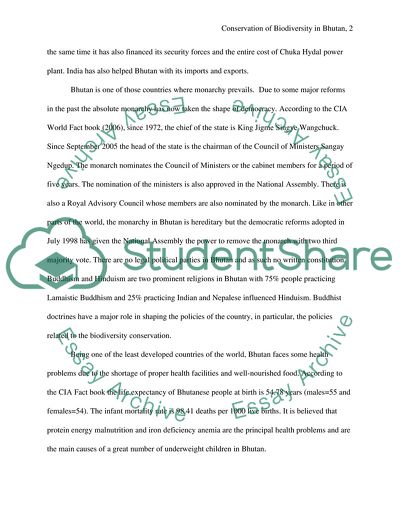Cite this document
(Conservation of Biodiversity in Bhutan Essay Example | Topics and Well Written Essays - 1500 words, n.d.)
Conservation of Biodiversity in Bhutan Essay Example | Topics and Well Written Essays - 1500 words. https://studentshare.org/biology/1705043-research-paper-onbhutan-located-in-asia-format-as-per-outline-attached
Conservation of Biodiversity in Bhutan Essay Example | Topics and Well Written Essays - 1500 words. https://studentshare.org/biology/1705043-research-paper-onbhutan-located-in-asia-format-as-per-outline-attached
(Conservation of Biodiversity in Bhutan Essay Example | Topics and Well Written Essays - 1500 Words)
Conservation of Biodiversity in Bhutan Essay Example | Topics and Well Written Essays - 1500 Words. https://studentshare.org/biology/1705043-research-paper-onbhutan-located-in-asia-format-as-per-outline-attached.
Conservation of Biodiversity in Bhutan Essay Example | Topics and Well Written Essays - 1500 Words. https://studentshare.org/biology/1705043-research-paper-onbhutan-located-in-asia-format-as-per-outline-attached.
“Conservation of Biodiversity in Bhutan Essay Example | Topics and Well Written Essays - 1500 Words”. https://studentshare.org/biology/1705043-research-paper-onbhutan-located-in-asia-format-as-per-outline-attached.


